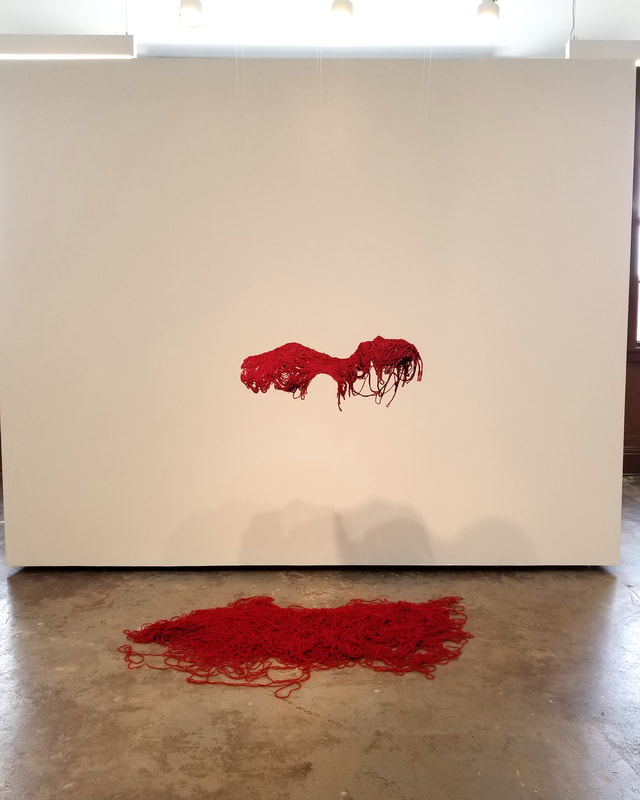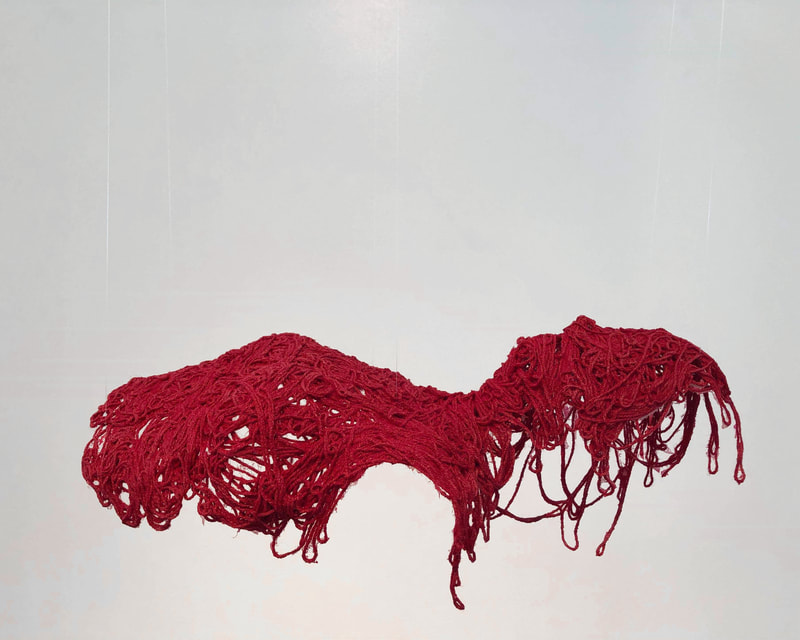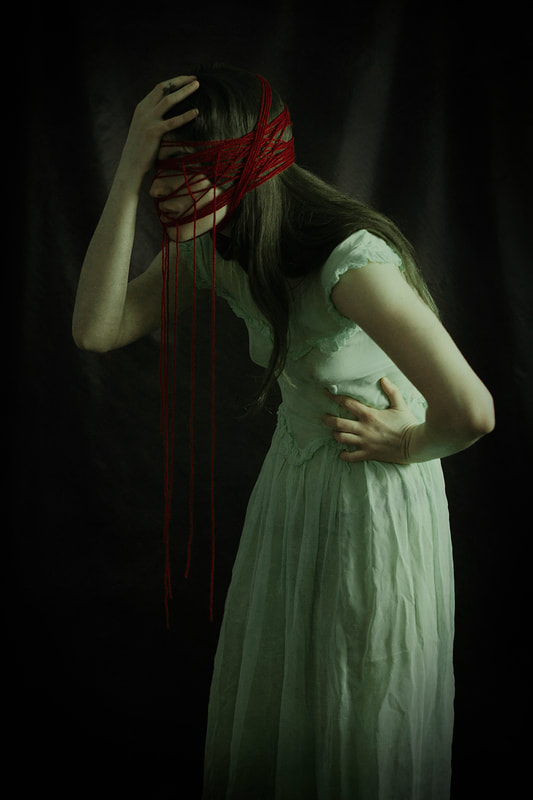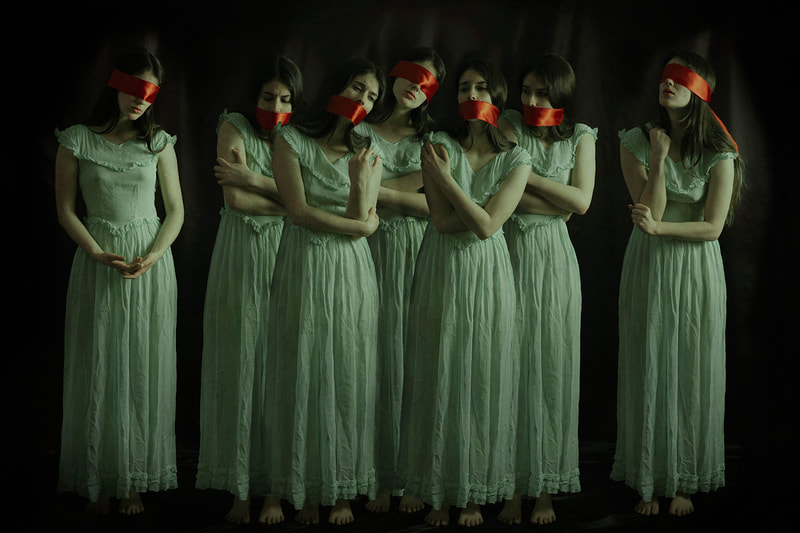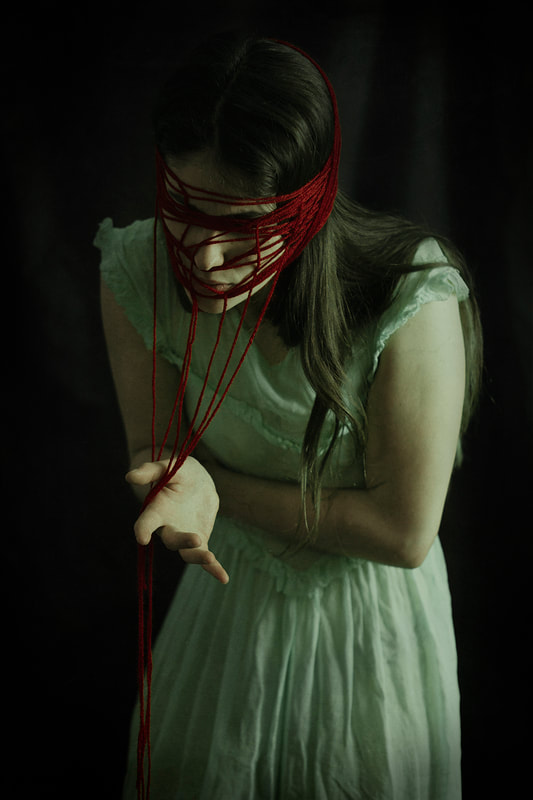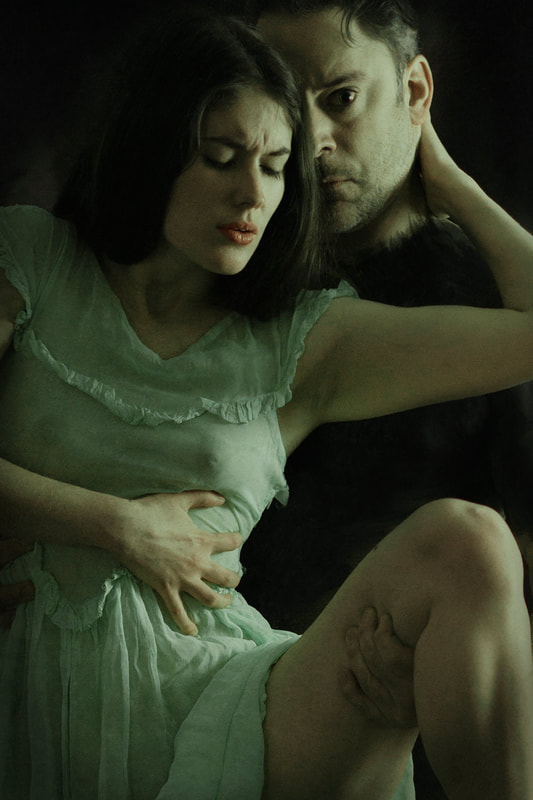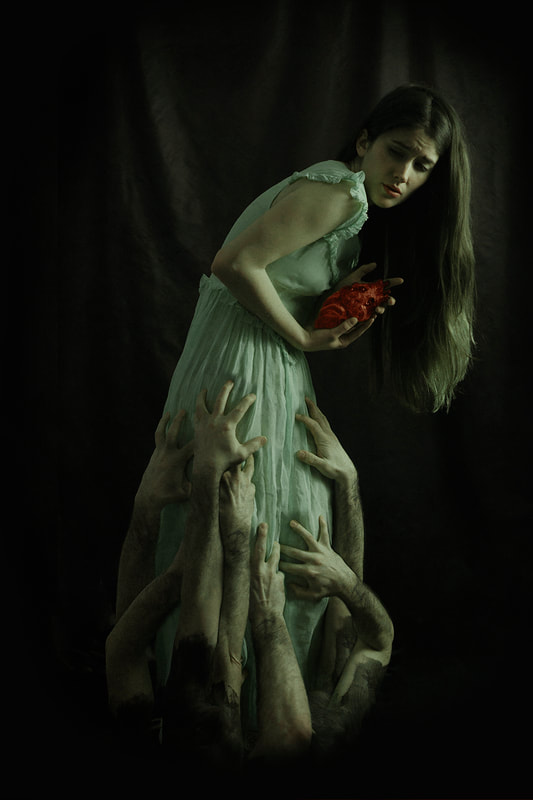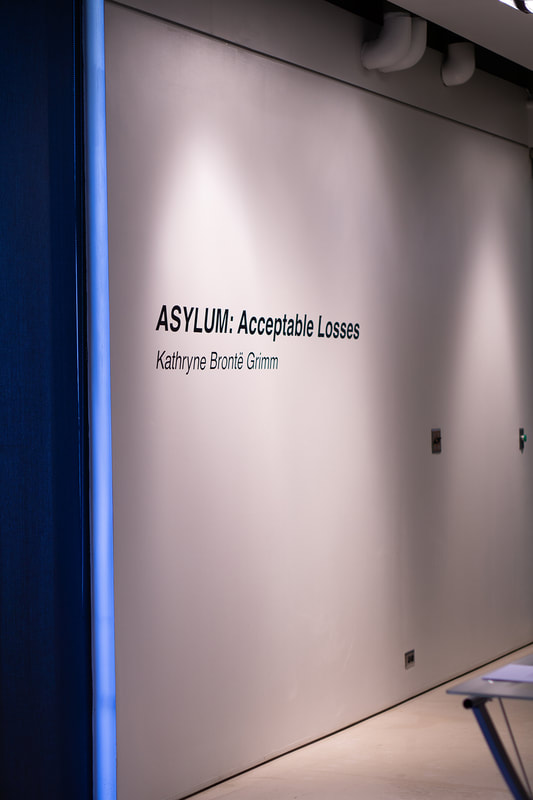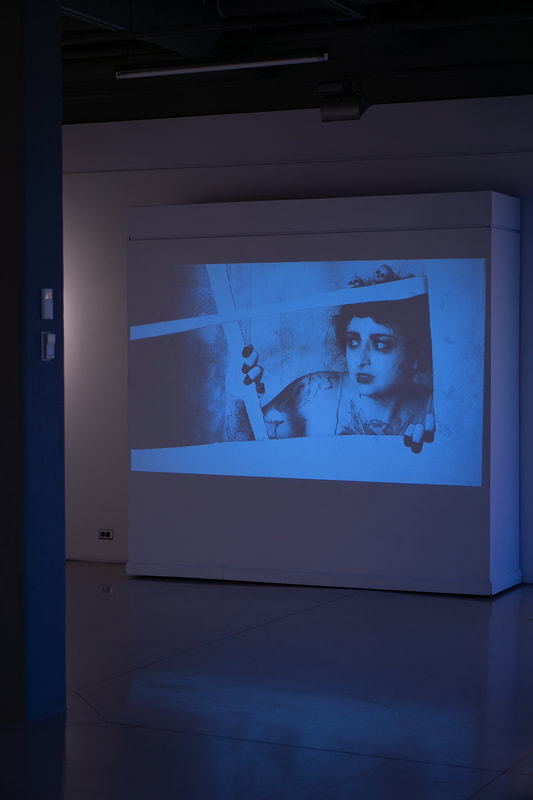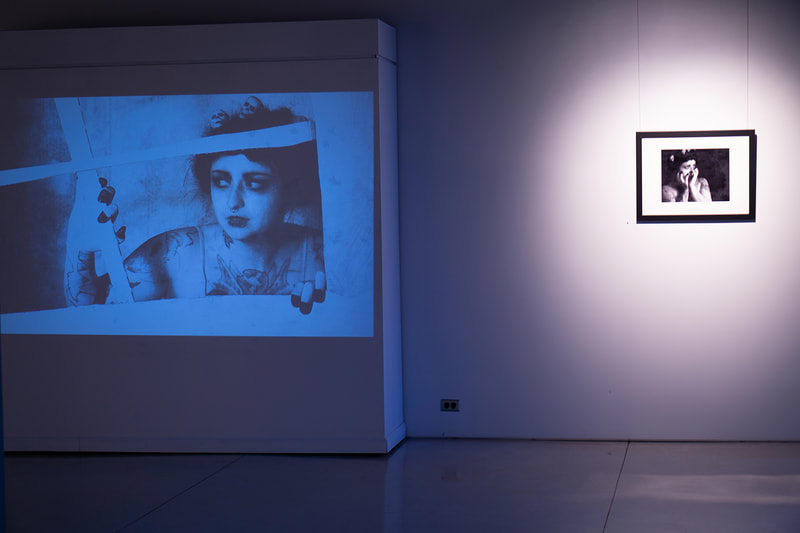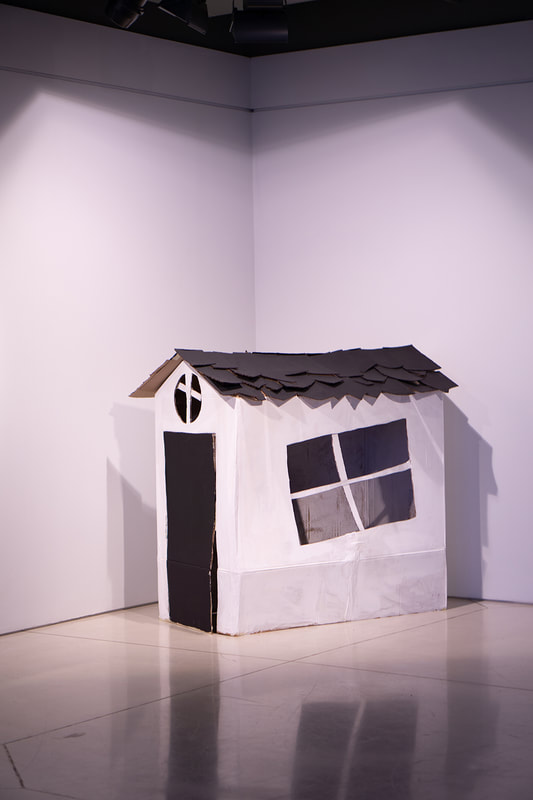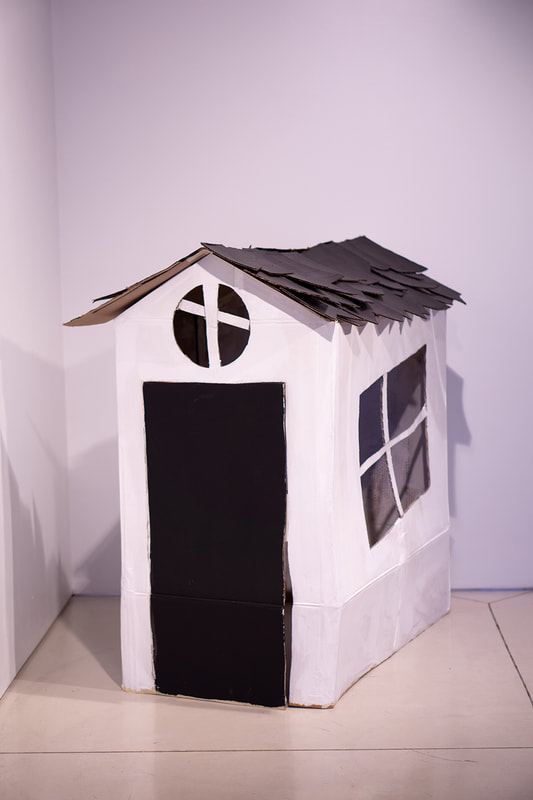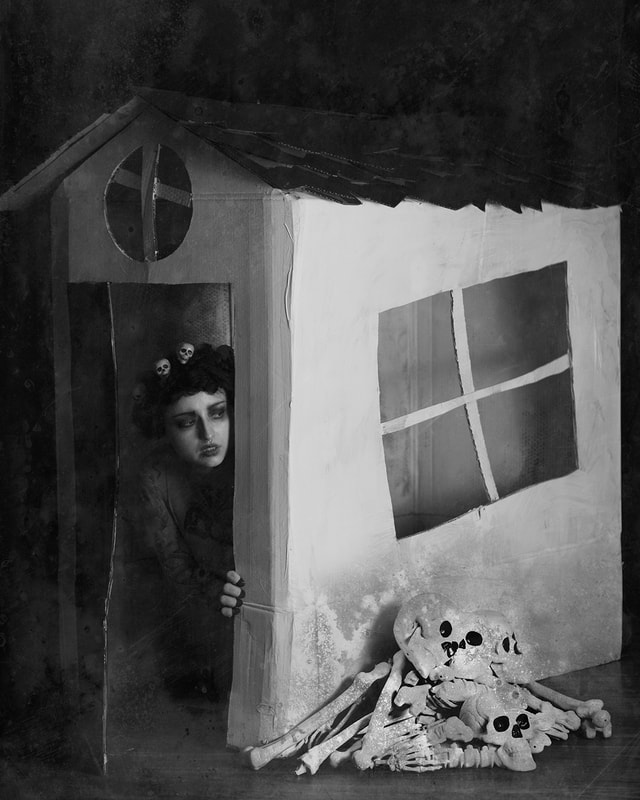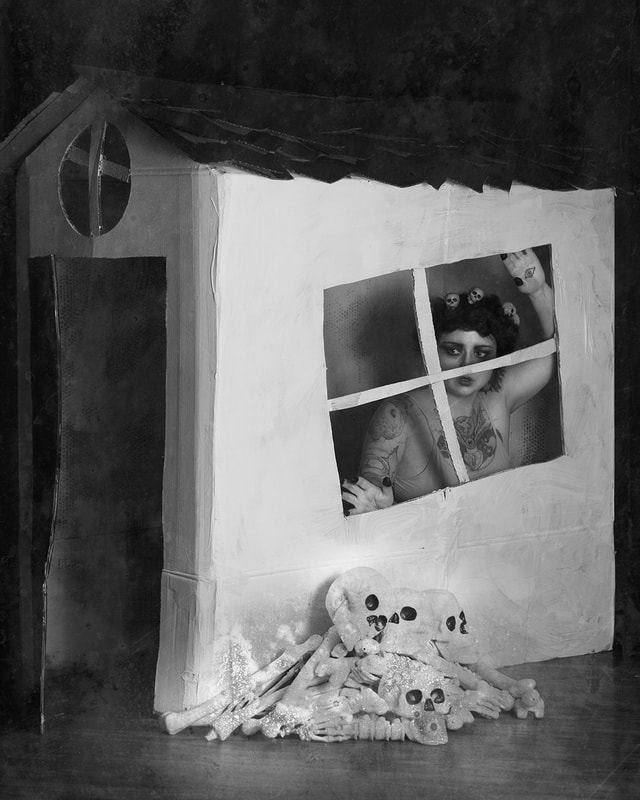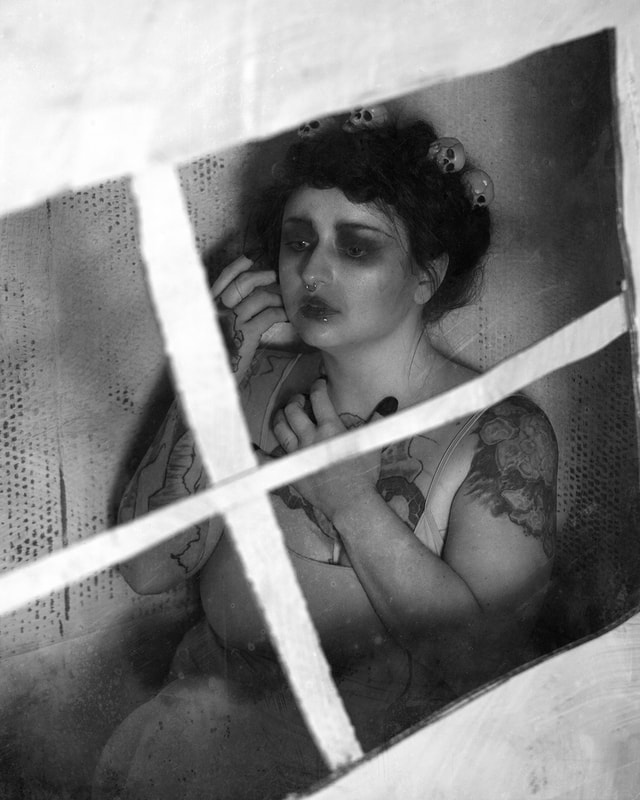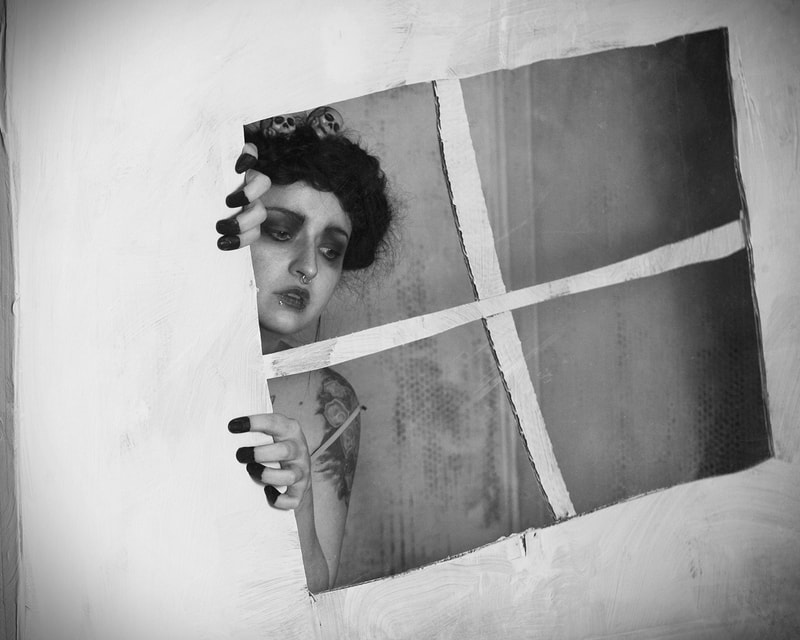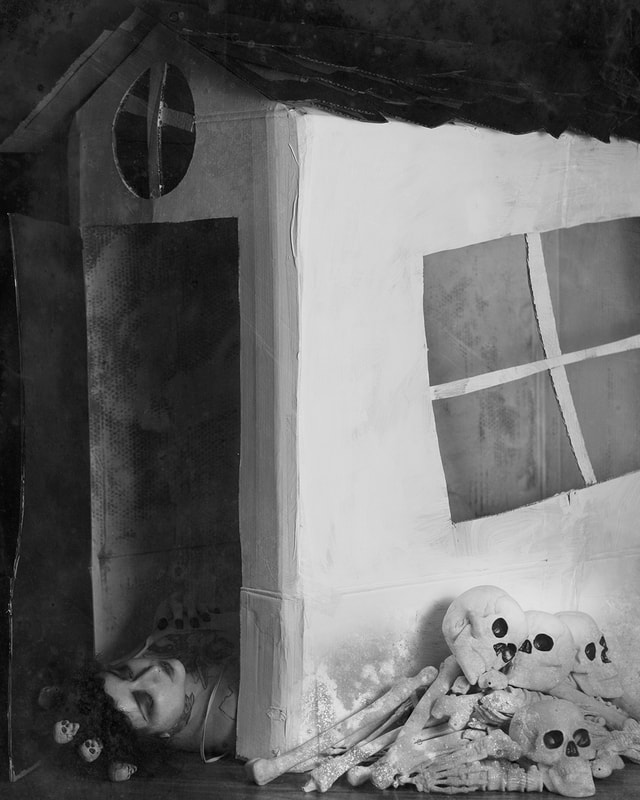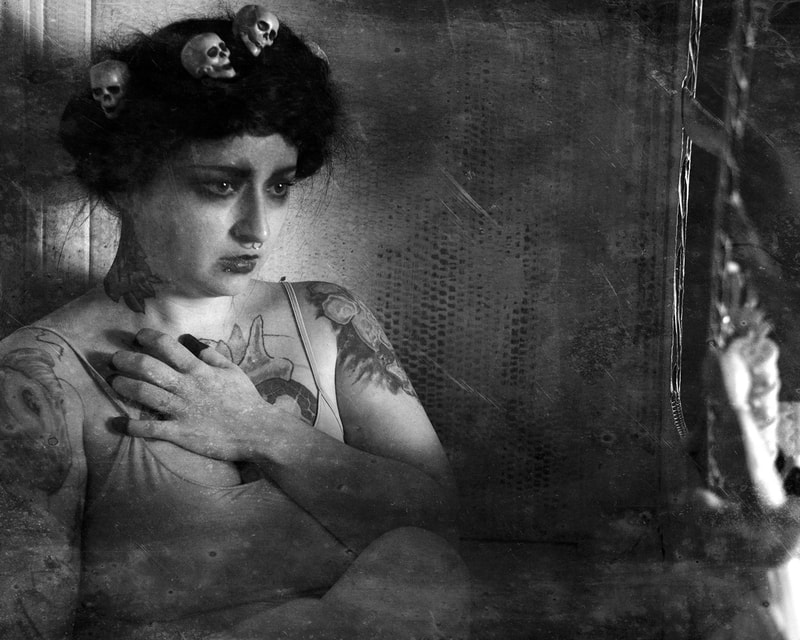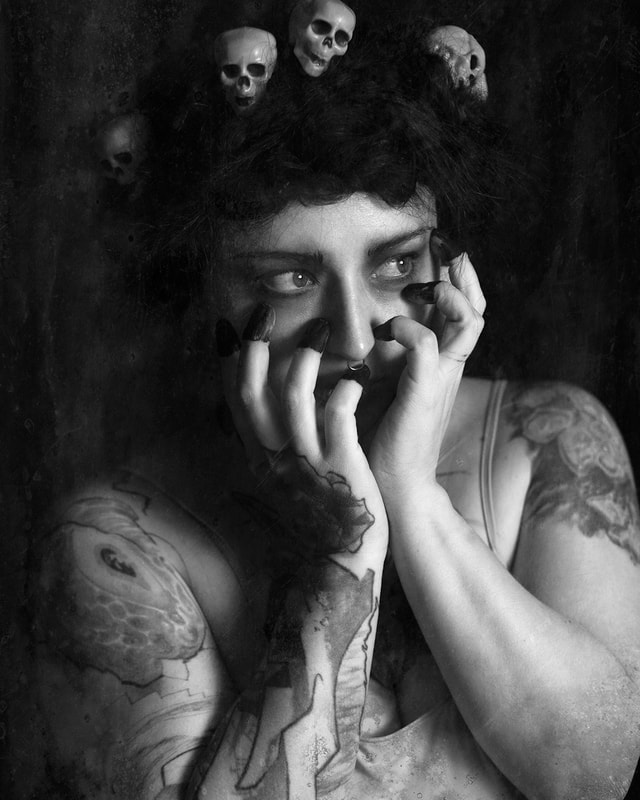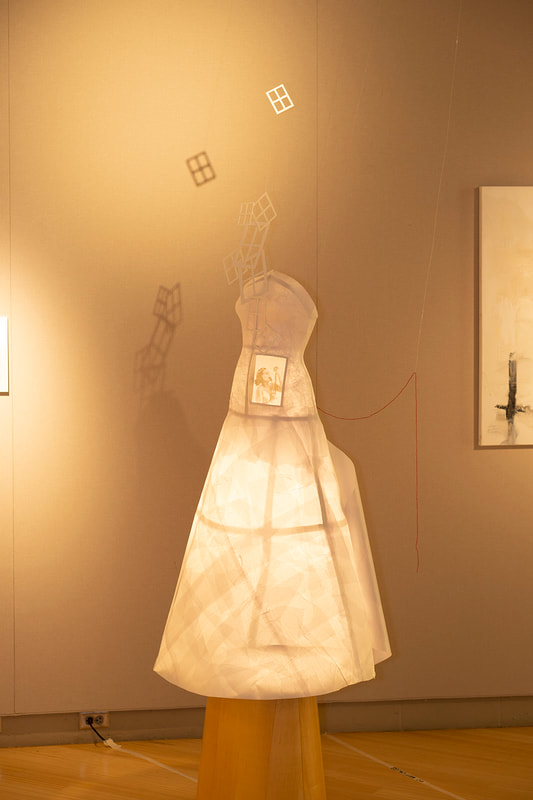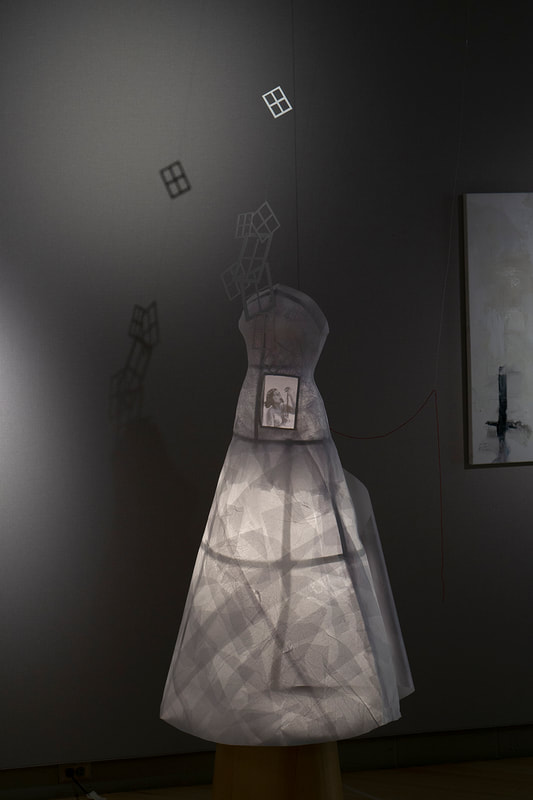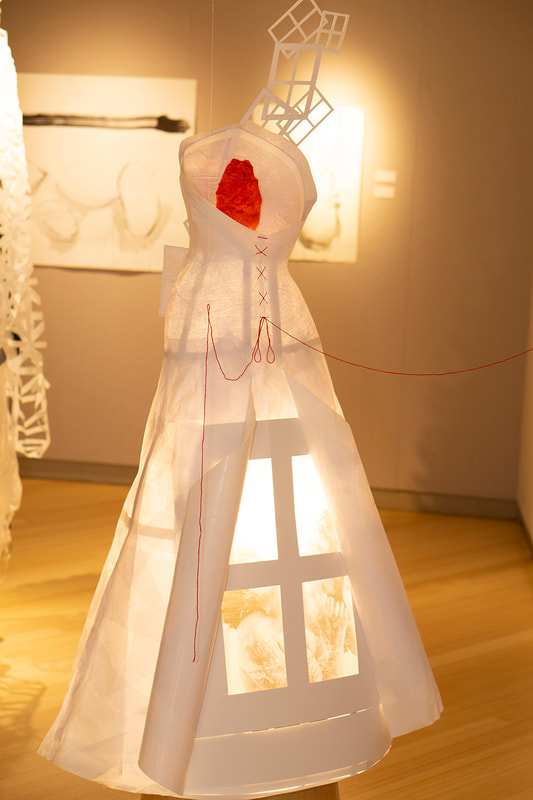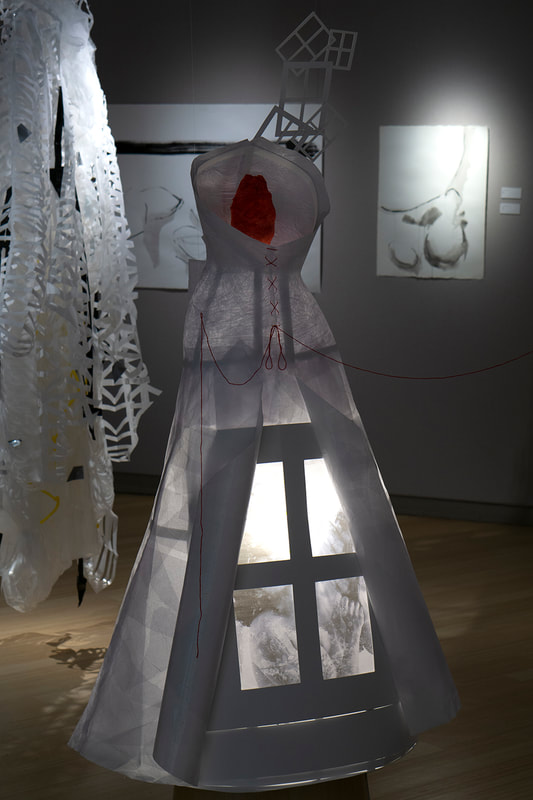Invisible Victims, 2020 - Installation and Multimedia
|
|
"At Least You Have Someone Who Takes Care of You" - Yarn, PVA glue, and spray paint - 2020
|

"2555 Days, 2555 inches of yarn" - a section of the artist’s wedding dress, the artist's blood, 2555 inches of red acrylic yarn - 2020
Invisible Victims
A series about the intersection of Disability and Domestic Violence - Brontë Grimm - 2020
Disabled people are 40% more likely to experience intimate partner violence than those without disabilities. Women with intellectual disabilities are sexually assaulted at rates more than twelve times higher than those without disabilities. 83% of disabled women are sexually assaulted in their lifetime.
Invisible Victims examines the internal narrative of a disabled domestic violence victim while they are living with their abuser, and functions as a voice for victims of an epidemic that is never addressed. We follow the invisible victim as they experience severe isolation, represented by a stark dark background and often solitary presence, though evidence of the abuser is always present through the symbolic use of the color red. We continue through observing them experiencing a denial of bodily autonomy, woven in numerous pieces either through the use of hands violating the figure, smeared lipstick, or blindfolds and gags. We then follow them as they experience torture, with drops of blood symbolic for the abuser’s actions. This victim cries for help, but their cries go unanswered, and they, inevitably, stand alone, cradling their head in their hands, left by society to endure their unexitable circumstances. We finally find them at the end of the series, covered in their own blood as a subversive Madonna; a failure of societal expectations of disability to be “inspiring” and function as inspiration porn to the non-disabled. Instead of society creating avenues of assistance, the invisible victim is judged for not performing perfect inspirational disability.
A series about the intersection of Disability and Domestic Violence - Brontë Grimm - 2020
Disabled people are 40% more likely to experience intimate partner violence than those without disabilities. Women with intellectual disabilities are sexually assaulted at rates more than twelve times higher than those without disabilities. 83% of disabled women are sexually assaulted in their lifetime.
Invisible Victims examines the internal narrative of a disabled domestic violence victim while they are living with their abuser, and functions as a voice for victims of an epidemic that is never addressed. We follow the invisible victim as they experience severe isolation, represented by a stark dark background and often solitary presence, though evidence of the abuser is always present through the symbolic use of the color red. We continue through observing them experiencing a denial of bodily autonomy, woven in numerous pieces either through the use of hands violating the figure, smeared lipstick, or blindfolds and gags. We then follow them as they experience torture, with drops of blood symbolic for the abuser’s actions. This victim cries for help, but their cries go unanswered, and they, inevitably, stand alone, cradling their head in their hands, left by society to endure their unexitable circumstances. We finally find them at the end of the series, covered in their own blood as a subversive Madonna; a failure of societal expectations of disability to be “inspiring” and function as inspiration porn to the non-disabled. Instead of society creating avenues of assistance, the invisible victim is judged for not performing perfect inspirational disability.
Asylum: Acceptable Losses, 2020 - Installation
Below is a 10 minute long loop that most closely recreates the installation viewing experience.
Asylum: Acceptable Losses, by Brontë Grimm, was created in direct response to the horrific ableism during the Covid-19 Pandemic.
Asylum: Acceptable Losses tells the story of a disabled person isolated at home during a pandemic. Utilizing German Expressionist cinematic visuals, we see the experiences of the disabled for what they actually are; a truly terrifying horror story. Finally centering the perspective of the disabled person, we watch as virus levels rise, and the remains of fellow disabled people pile metaphorically outside their door. We see the abject horror on their face as they are consistently told by those in positions of power that their life is worth less than a non-disabled life. We see their terror as they watch medical professionals talk about not utilizing life-saving measures for the disabled in order to prioritize equipment for the non-disabled. And finally, we see them full of dread, as they are consistently told, via pundits and social media, that they should die because it’s patriotic, and the economy is worth more than their life.
Asylum: Acceptable Losses tells the story of a disabled person isolated at home during a pandemic. Utilizing German Expressionist cinematic visuals, we see the experiences of the disabled for what they actually are; a truly terrifying horror story. Finally centering the perspective of the disabled person, we watch as virus levels rise, and the remains of fellow disabled people pile metaphorically outside their door. We see the abject horror on their face as they are consistently told by those in positions of power that their life is worth less than a non-disabled life. We see their terror as they watch medical professionals talk about not utilizing life-saving measures for the disabled in order to prioritize equipment for the non-disabled. And finally, we see them full of dread, as they are consistently told, via pundits and social media, that they should die because it’s patriotic, and the economy is worth more than their life.
Colla Voce, 2019 - Installation
Artist Talks
|
|
|

